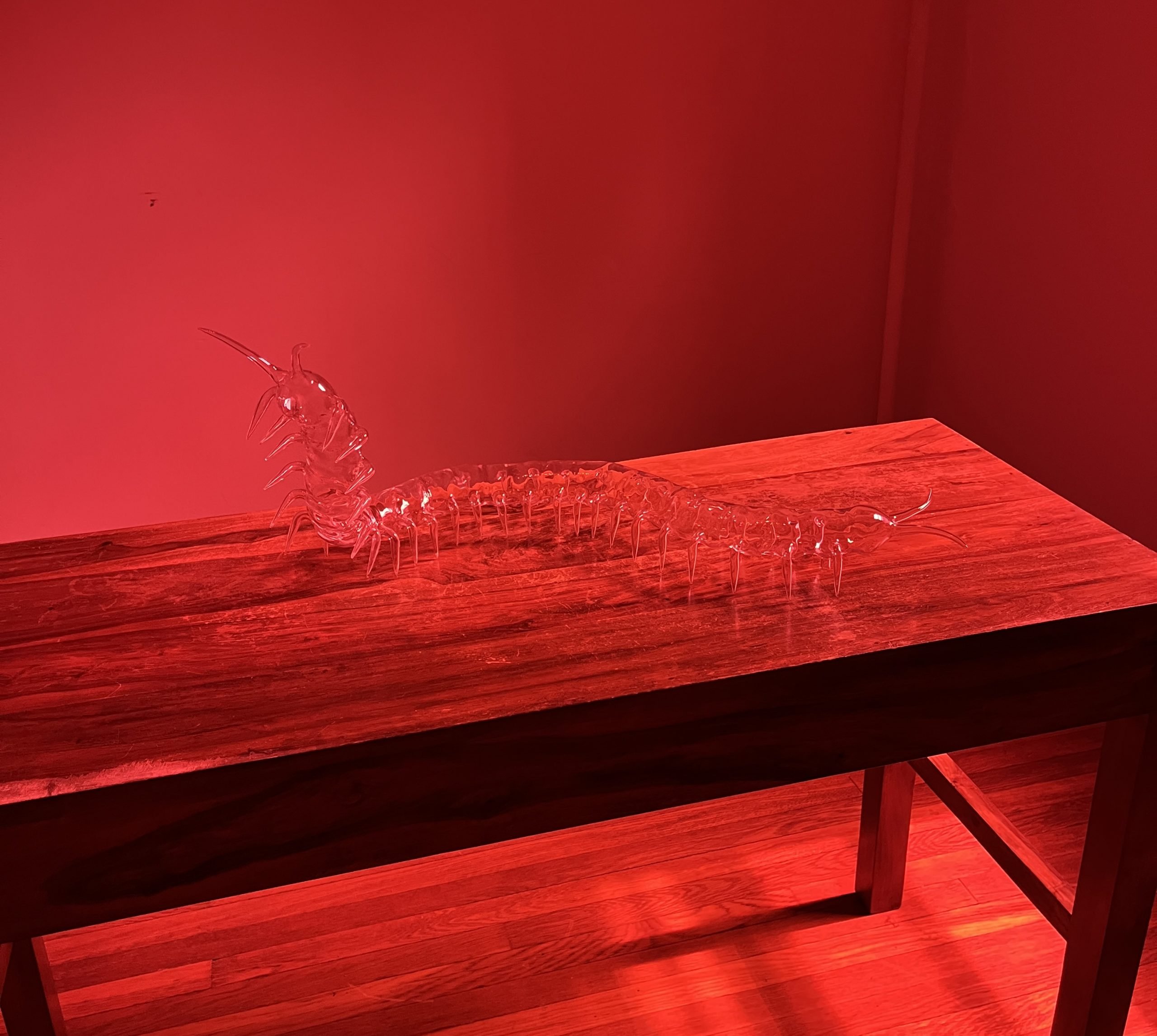
Perhaps it has happened to you. You are walking down a Manhattan sidewalk and catch sight of an intriguing artwork through an apartment window. I try not to be too weird about it. I slow down a bit and investigate, discreetly. What’s that on the wall? An early Robert Rauschenberg? An unusual Cindy Sherman? Alas, I can rarely tell. There is a lot of art in this world, and the finest stuff tends to hang in apartments far from the gazes of passersby.
Recently, though, there have been some excellent art shows in New York apartments operating as art spaces, accessible to the general public, no spying or special invitation necessary. They are reminders that all you really need to start a gallery is a clean, well-lighted place (which is the name that the writer Dave Hickey gave to his fabled Austin gallery in the 1960s, borrowing the title of the Ernest Hemingway short story).
Below are three such exhibitions, one apiece in Queens, Manhattan, and Brooklyn. While they are modest in scale, don’t count that against them. Remember that, in 1957, the art dealer Leo Castelli converted a room in his Upper East Side apartment into an exhibition space. He went on to do some big things.
Tisch Abelow’s Nuclear Family (2024) in ‘Nuclear Family’ in ‘Shoot for the Stars’ at Swanson Kuball. Photo courtesy Swanson Kuball.
A Family Affair in Long Island City
The most heartwarming show in town of late? A strong contender has to be “Shoot for the Stars,” which featured five artists from one extended family at Swanson Kuball, the Long Island City residence of proprietors Laura Swanson and Greg Kuball.
The canny painter Joshua Abelow—a longtime New York presence who’s run an unusual space of his own upstate—delivered four spare, small new canvases, each with the silhouette of a man, faceless, seemingly on fire, and a few snapshots of suburbia. His sister Tisch Abelow‘s contributions included a meaty, cartoony portrait of the two artists as children with their (somewhat frazzled) parents. The Abelows’ late grandmother Paula Brunner Abelow was here, too, with vivid depictions of her husband, her children, and herself. The youngest participant was nine-year-old Lev Lazarus (the son of Joshua’s partner, Katya Kirilloff), who has a winning touch with pencils and markers, conjuring Minecraft figures and a grinning Joshua.
Kirilloff, for her part, sketched a faint self-portrait on a grocery bag—a mom enjoying a quiet moment—and painted a gouache of Lazarus that is disarmingly realistic, except for his two fanged teeth. Titled Vampire Boy (2023), it registers a dissonant note, alluding to familial power dynamics that tend to go unspoken and unseen.
Installation view of ‘Dave Miko: Welcome Weary Wanderer’ at Bill Cournoyer/The Meeting, with And Winter Roses (2024) at right. Photo courtesy the Meeting.
Scintillating Paintings in the West Village
New York has seen too little of the ace painter Dave Miko recently. “Welcome Weary Wanderer,” his current outing at Bill Cournoyer’s West Village apartment space, the Meeting, is his first solo show in the city in 10 years (R.I.P., Real Fine Arts) and his first solo anywhere in nine. Its 10 works are characteristically alluring, action-packed, slippery not-quite abstractions. The majority are oil on aluminum sheets (about square or oddly shaped), the approach Miko is known for, but there are also enamel-on-panel numbers. Looser and hazier, these could be spectral visions or close-ups of sprayed graffiti.
A faint melancholy lingers. Arrows swim around the green and copper Next to the Map (all works 2024). It’s a strong picture, but the best one here is the biggest, And Winter Roses. (A Hank Williams nod?) It’s 6 feet tall, a gray field bedecked with choppy black lines—you can just about hear Miko’s brush or knife sliding or skittering across the aluminum—that partially obscure large words. I can make out “solitude,” for one. Let’s hope there’s not too much of that. Miko, 50 this year, is making art that is at once plainspoken and otherworldly, thrilling and strange. You have until June 29 to see it.
Another view of Jacob Kassay’s show in Brooklyn Heights.
Mysterious Glass in Brooklyn Heights
Until New York’s 303 Gallery posted on Instagram late last month about artist Jacob Kassay‘s furtive project in a Brooklyn Heights apartment, news of its existence had been spreading only by word of mouth, like a rumor. A few days later, the by-appointment-only display closed. Titled “Khiropractik,” it was a kind of uncanny coda or reprise of Kassay’s solo show of the same name at Galerie Art Concept in Paris earlier this year.
The modest one-bedroom was bathed in red light—jarring at first, then serene, as in the Dream House (1969) of La Monte Young and Marian Zazeela. Foreboding glass creatures, centipedes the size of small dogs, were (barely) present—one on a table, three on the walls—lurking, as if momentarily frozen or beaming in from another dimension. Each of their 23 pairs of legs were perfectly, awfully rendered.
A news release for the French show likens the sculptures to “optical instruments, and more metaphorically, cinematographic devices by proxy.” What do they show us? What do they allow us to see? Fragile and ingenious models of a species that is more than 400 million years old, they could be taken as memento mori (these things will outlive us), or simply as invitations to look and think about art from unusual angles and against various spans of time. It was an enigmatic exhibition with at least one crystal-clear message: superb art can thrive in any environment.